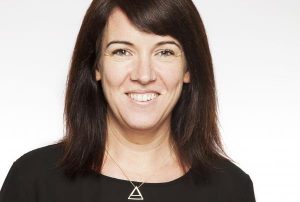Main Content

Going for growth
Growth – always a hot topic but especially of late, with the DBA running a number of discussion groups around the UK on the subject.
If you missed the events, then read on! They were stuffed full of debate as well as agreement between agencies, and plenty of light-bulb moments too. Here’s what we learnt:
You cannot do ‘growth’ on creativity alone
 Too many agencies focus on the quality of their work and creating a great working environment, but the reality is that your agency will never grow without an equal commitment to the commerciality of the business.
Too many agencies focus on the quality of their work and creating a great working environment, but the reality is that your agency will never grow without an equal commitment to the commerciality of the business.
Nick Howe of Uniform summed this up nicely when he said, “In order to grow you need to nurture all three areas of the business in EQUAL measure:
- Creativity
- Culture and
- Commerciality”
Organic growth happens by accident – and it can easily be reversed by events outside your control. To achieve sustainable growth it needs to be decided on as a defined aim of the business. And once you make the decision to grow, you need a very clear plan.
(Read more about the Uniform growth story here.)
The plan
 Your plan has to be flexible – to deal with issues like clients putting projects on hold, or key staff getting ill – so it needs to be constantly updated.
Your plan has to be flexible – to deal with issues like clients putting projects on hold, or key staff getting ill – so it needs to be constantly updated.
Trevor Cairns, CEO of LOVE, joined the agency four years ago after heading the UK business of Nike (a client of the agency). He has brought with him structure, commerciality – and most importantly, a plan.
Says Trevor, “I re-launch the plan every six months. I have an in-depth version for the Board, a version for the senior management team, and a top-level one for the whole team. It means that everyone knows the direction of travel, and it puts context around all our decisions so that all staff can understand why we are doing specific things.”
In 2012 Uniform decided to make a concerted effort to grow. They had the right mix of people at the top – the three founders plus two others on the Board – to cover the “3 C’s”, and put together a clear plan on how they would achieve their goals.
Radically, they decided to cut their client list in half, but at the same time widening their scope of work so they were able to deliver more work for the clients they kept. They re-introduced R&D to the business and invested heavily in developing their culture and processes. They built new services and worked hard to find the best talent to deliver the services.
They raised £1/2m in grant money and bank funding (which the directors personally guaranteed), and invested a further £1/2m of profits back into the business over the following three years.
Both Love and Uniform have similar basic plans for the years ahead – which Trevor at LOVE summarised as “20:20:20”. Aiming for 20% annual growth, a 20% profit margin and having no client contributing more than 20% of their business. But as Trevor emphasised, “Our plan is a guide, not a rule. Don’t risk your culture by doing soul destroying work just to get from 18% to 20%.”
Make decisions based on your plan, and act quickly.
 Having a business plan makes the hard decisions easier to make. The plan is the filter through which all decisions are put through:
Having a business plan makes the hard decisions easier to make. The plan is the filter through which all decisions are put through:
- Do we hire this person?
- Do we chase this type of work?
- Do we let this person go?
These decisions are all made easier by asking if they fit with the plan.
Letting people go is never easy, but having a plan makes it clear earlier when people are not right, or if the business cannot sustain someone in that position. One wrong person can have a negative effect on the whole business.
 It also justifies difficult decisions with clients. “Don’t be afraid to sack a client,” says Nick “they have to be profitable.” Another DBA member, Exesios headed by Paul Brammer, admitted that once they got their systems sorted out they discovered that their largest client, who was taking up 50% of their time, was only contributing a tiny fraction of their profit. Losing the client suddenly freed up so much time for other, more profitable, clients.
It also justifies difficult decisions with clients. “Don’t be afraid to sack a client,” says Nick “they have to be profitable.” Another DBA member, Exesios headed by Paul Brammer, admitted that once they got their systems sorted out they discovered that their largest client, who was taking up 50% of their time, was only contributing a tiny fraction of their profit. Losing the client suddenly freed up so much time for other, more profitable, clients.
Proactive recruitment
The biggest single thing that both LOVE and Uniform did when they started on their route to growth was to change their recruitment model. In the past they had tried to win work, then find the extra staff quickly in order to fulfill that work. The speed at which you have to recruit means that you often recruit the wrong person – you are just trying to “get the bodies in.” Changing to a proactive model is key.
Brian Mansfield, Chairman of Taxi Studios in Bristol, backs this up. His rather succinct mantra is “hire slow, fire fast.” Constantly looking for good people, and hiring them when you find them, protects your culture because you are not panic-hiring. But if you get it wrong, you have to act quickly.
While Nick Howe acknowledges that many might see proactive recruitment as a gamble, he preferred to think of it as “investing in people.” LOVE hasn’t had a problem finding work for their new people. Trevor explains, “Saying you have a creative director specialising in packaging, or experiential, makes winning work a lot easier than trying to convince a client that you can skill up and hire a team if they give you the work.”
Develop your staff
 In addition to recruiting good staff, a key way to maintain your culture is to develop existing staff and grow them as the company grows. Uniform identified that on their planned growth journey they would quickly reach a time where they would need a middle management team to manage the day to day running of the business. They identified six staff in the business who they felt had what it takes, did a skills analysis, and produced a management team development programme to skill them up. The programme consisted of internal mentoring, external training courses from the DBA and D&AD and in-house training with consultants running bespoke courses, again organised by the DBA.
In addition to recruiting good staff, a key way to maintain your culture is to develop existing staff and grow them as the company grows. Uniform identified that on their planned growth journey they would quickly reach a time where they would need a middle management team to manage the day to day running of the business. They identified six staff in the business who they felt had what it takes, did a skills analysis, and produced a management team development programme to skill them up. The programme consisted of internal mentoring, external training courses from the DBA and D&AD and in-house training with consultants running bespoke courses, again organised by the DBA.
“Plans have to be flexible,” said Nick “two of the six didn’t work out – they were less interested in the management side but because we had such an open and honest dialogue this was identified early enough for us to develop career paths for them in the creative areas they loved.”
“Change makes people nervous,” says Trevor, which isn’t necessarily a bad thing. Love have managed to maintain a recruitment rate of one person a month, to allow the last person to get settled before the next new person arrives.
Uniform’s growth has changed the balance of their agency somewhat, with a much stronger focus on new business (from one to four people) to bring in the amount of work needed, and client servicing (from two to nine people) to build relationships with existing clients – all part of the plan to do more work for their existing clients.
Practise what you preach
 It is very easy to fall into the trap described as “the plumber with the leaky tap” where everyone in the agency concentrates on producing great work for the clients, but no one thinks about their own brand. Nick Farrar, MD and owner of Shaped By says, “You have to look after the day-to-day stuff – the infrastructure to make your agency run smoothly” and, “look after your own brand and marketing.” The inference is clear – how can you advise clients if you don’t practise what you preach? Look after your own brand. There is nothing wrong with commissioning another agency to do your website if you don’t have the best digital skills in-house. And don’t be too proud to ask for advice – whether that be from accountants, friends in other businesses or mentors.
It is very easy to fall into the trap described as “the plumber with the leaky tap” where everyone in the agency concentrates on producing great work for the clients, but no one thinks about their own brand. Nick Farrar, MD and owner of Shaped By says, “You have to look after the day-to-day stuff – the infrastructure to make your agency run smoothly” and, “look after your own brand and marketing.” The inference is clear – how can you advise clients if you don’t practise what you preach? Look after your own brand. There is nothing wrong with commissioning another agency to do your website if you don’t have the best digital skills in-house. And don’t be too proud to ask for advice – whether that be from accountants, friends in other businesses or mentors.
Be true to yourself and enjoy

And finally, Merle Hall of Kinneir Dufort, says you have to be true to your values and enjoy what you are doing. She quotes Jim Collins’ Hedgehog concept principle #1 “ Do what you are most passionate about.” After all, if you are not enjoying it you can’t do it brilliantly. This authenticity at the heart of your business will allow you to “do great stuff” – which allows the growth to happen.
DBA Expert Ralph Ardill argues that the most important “client” for every agency is their own business. Agencies should set up a “Project You”, put time and a budget against it just as you would a paying client, and commit to it as you would your most important client. Read more about Ralph’s “Project You” ideas here.
Recommended reading
The following have been suggested by members for those looking to make a step change in their business:
“Win without pitching” by Blair Enns
“Small Giants” by Bo Burlingham
“Good to great” by Jim Collins
“Building design strategy” by Thomas Lockwood
“How to run a successful design business” by Shan Preddy
You can find more examples of agency growth in these case studies:
Image credits: © Redwall | Dreamstime.com
Image credits: © Les Cunliffe | Dreamstime.com